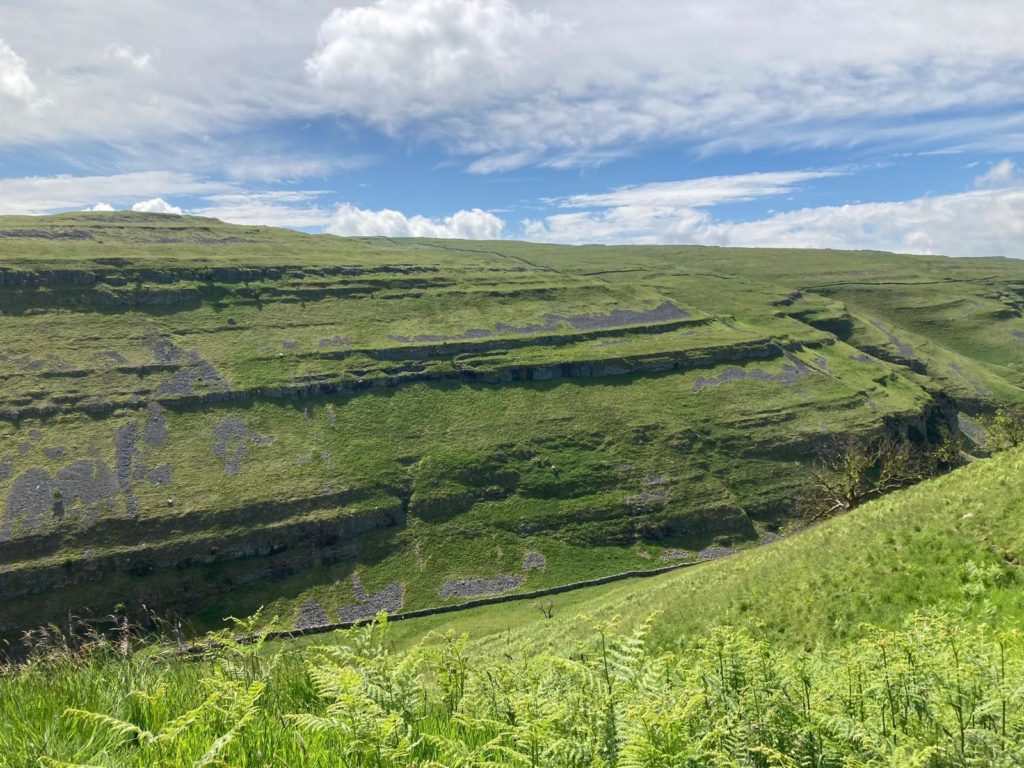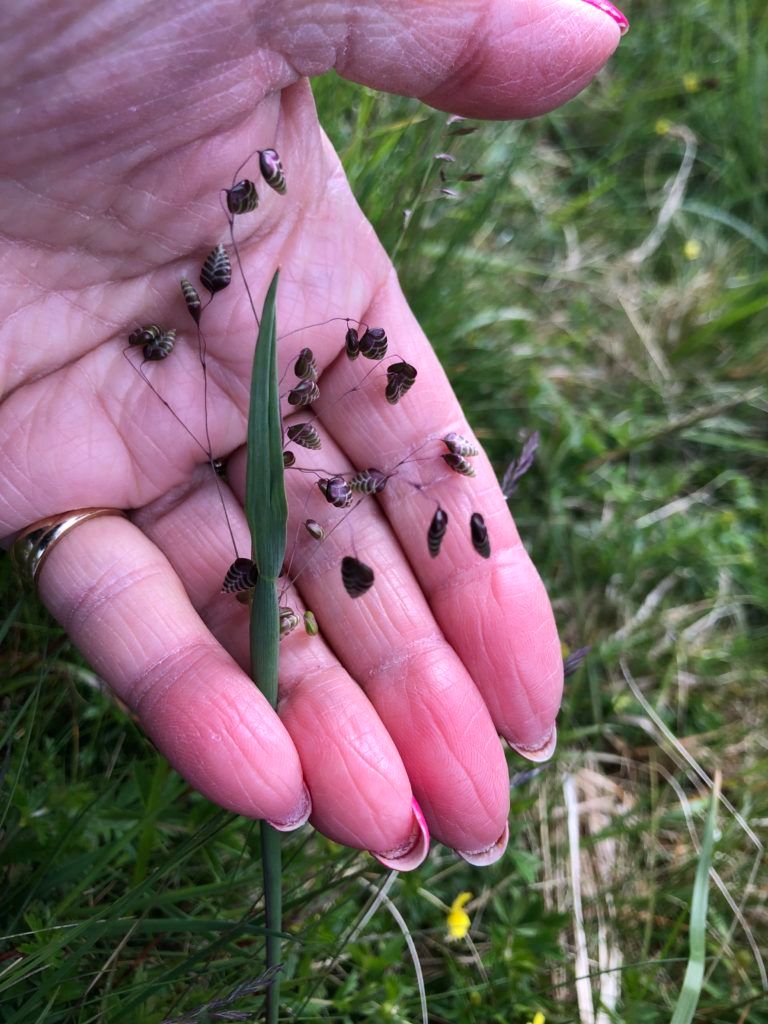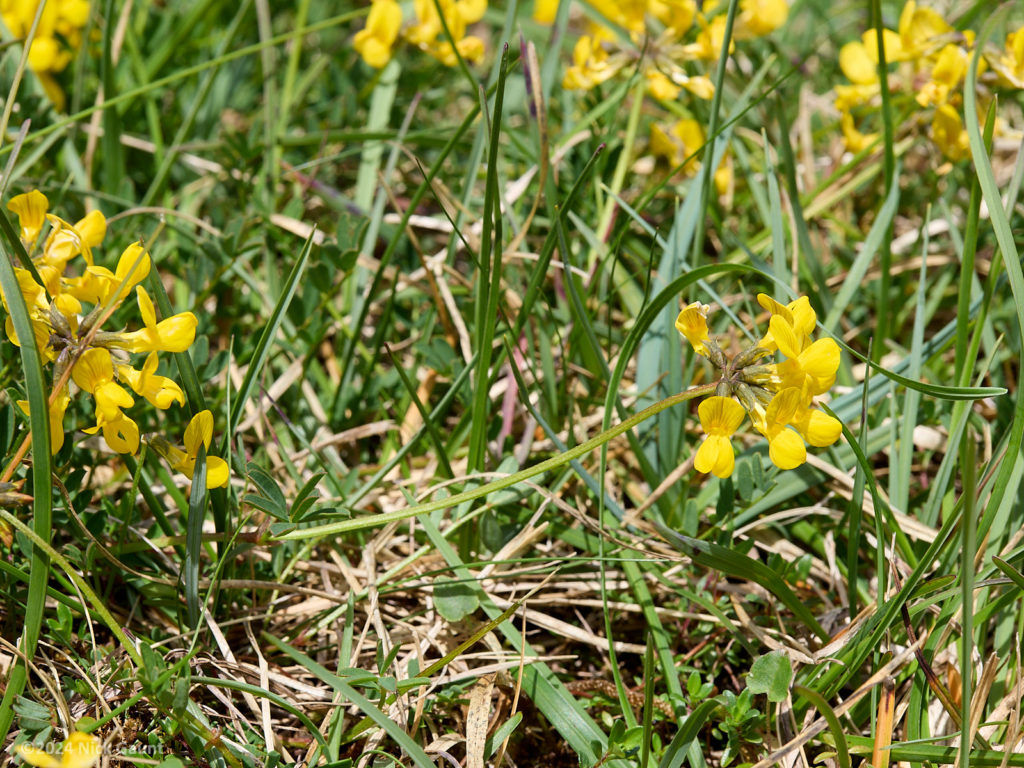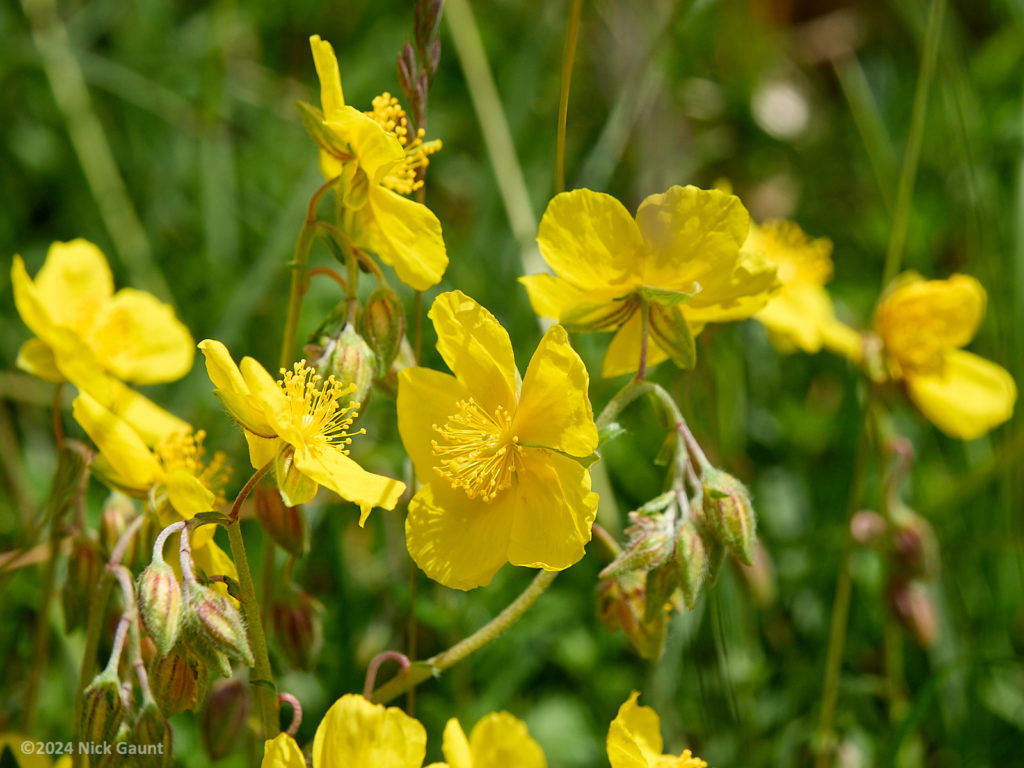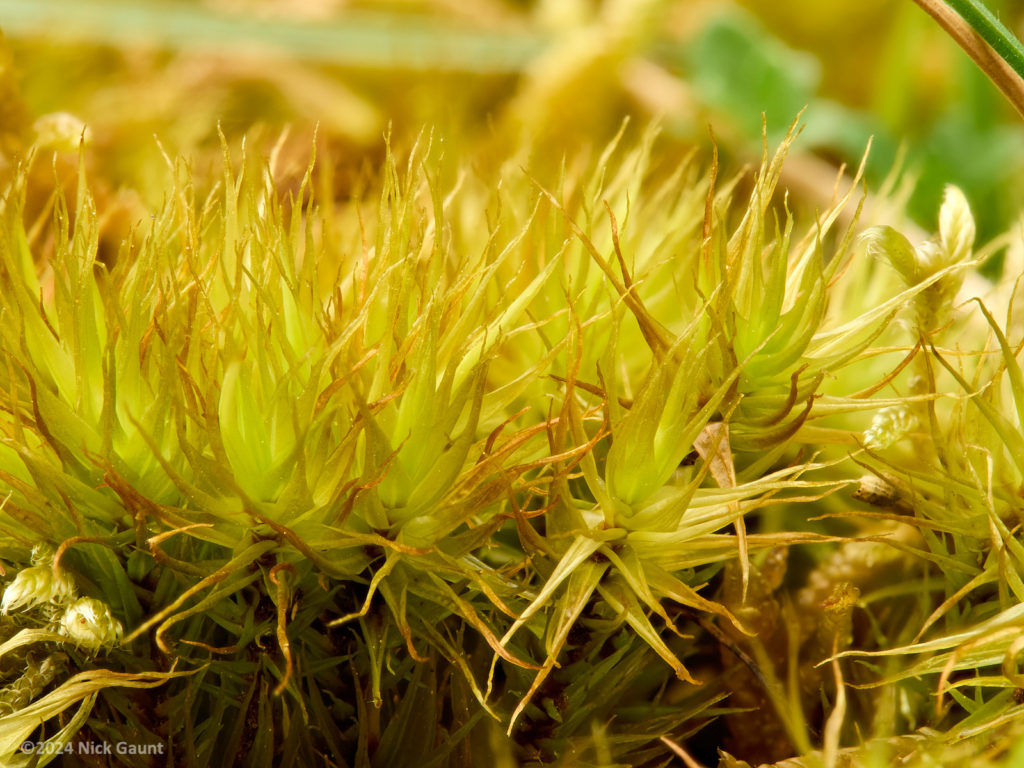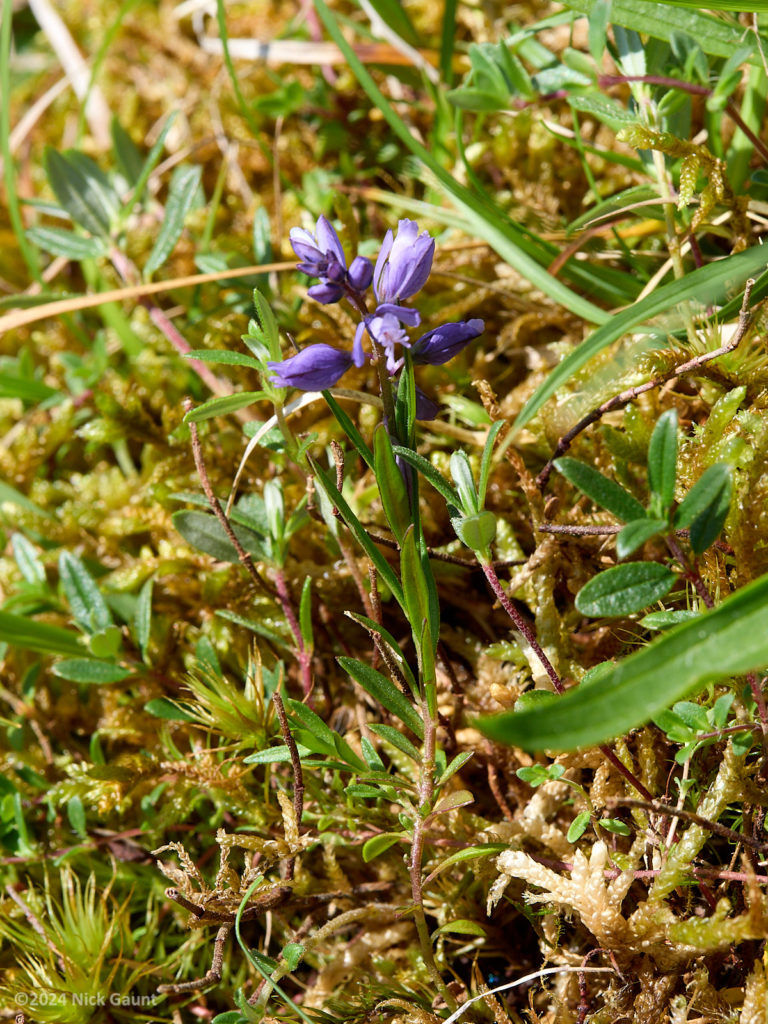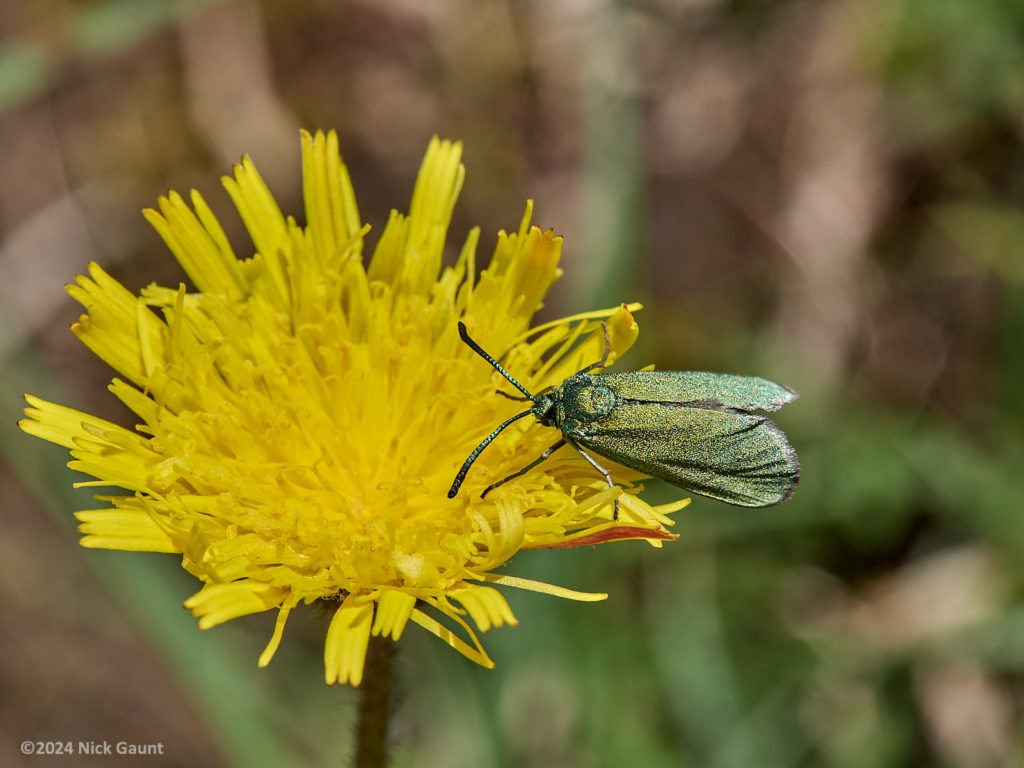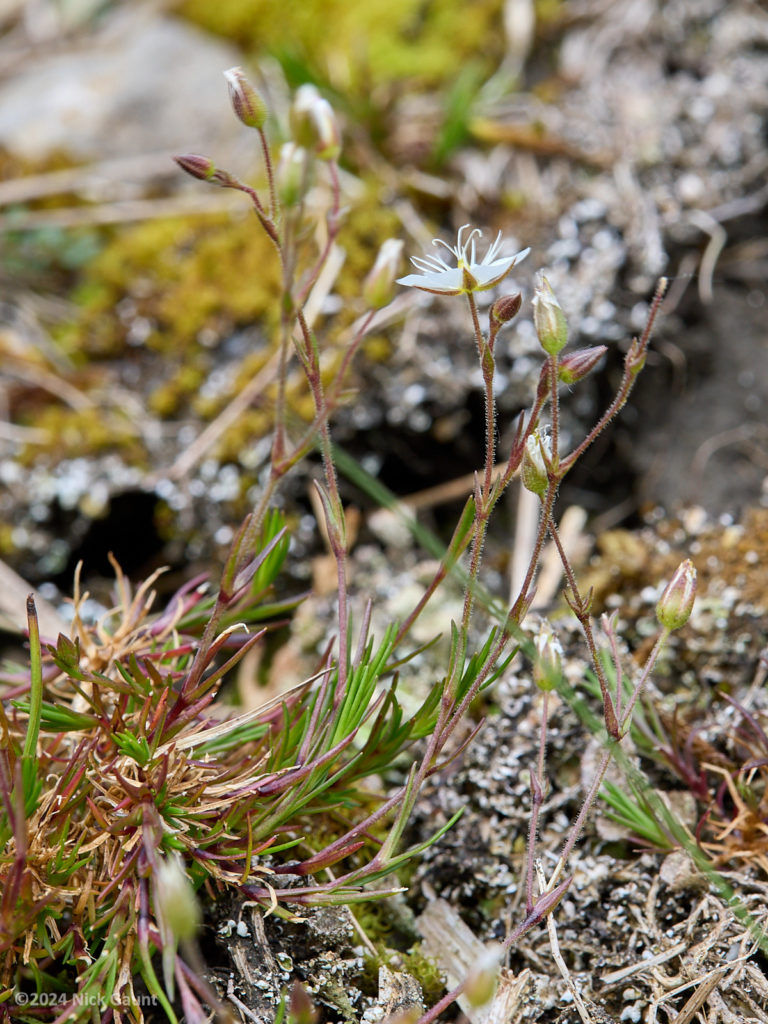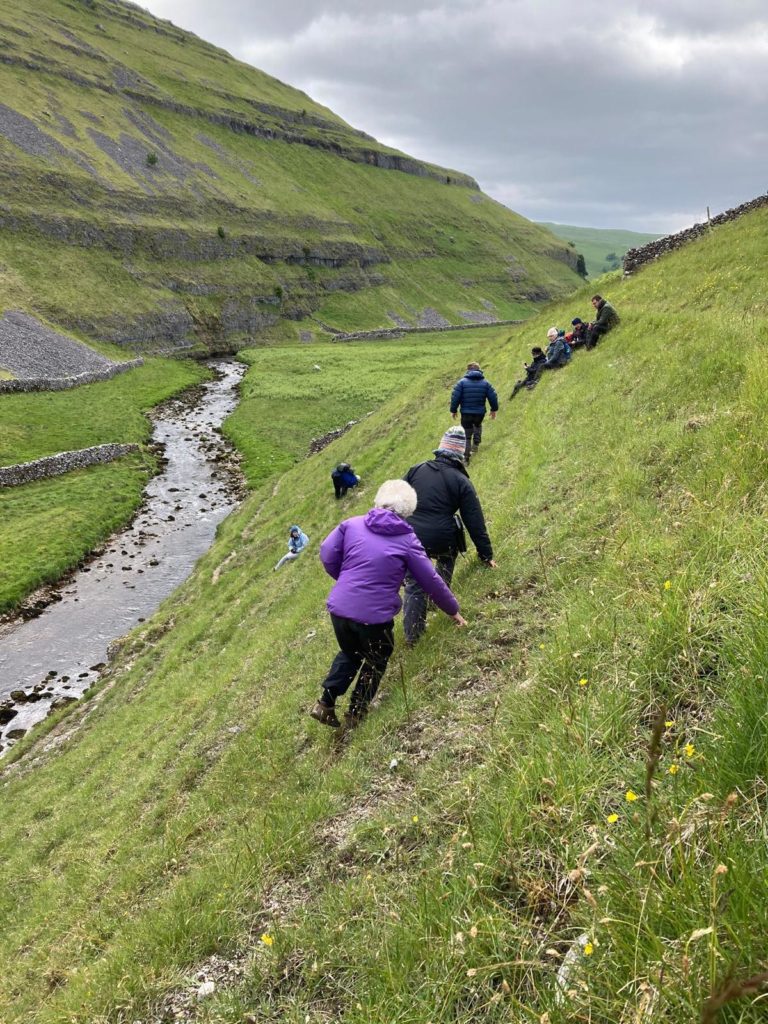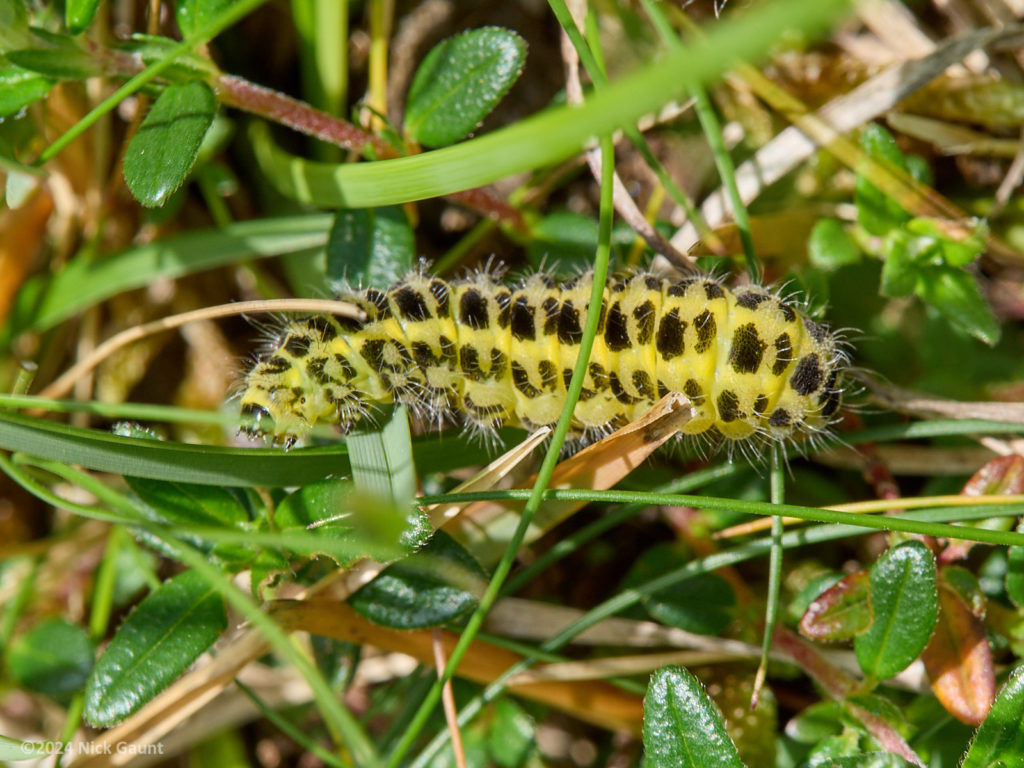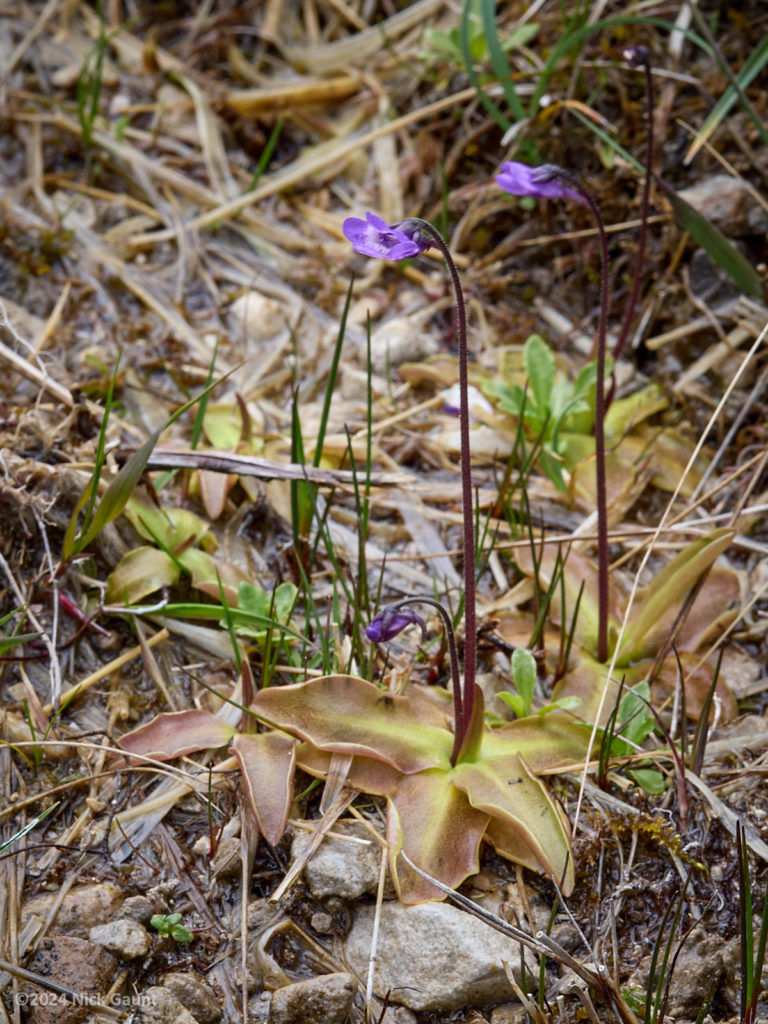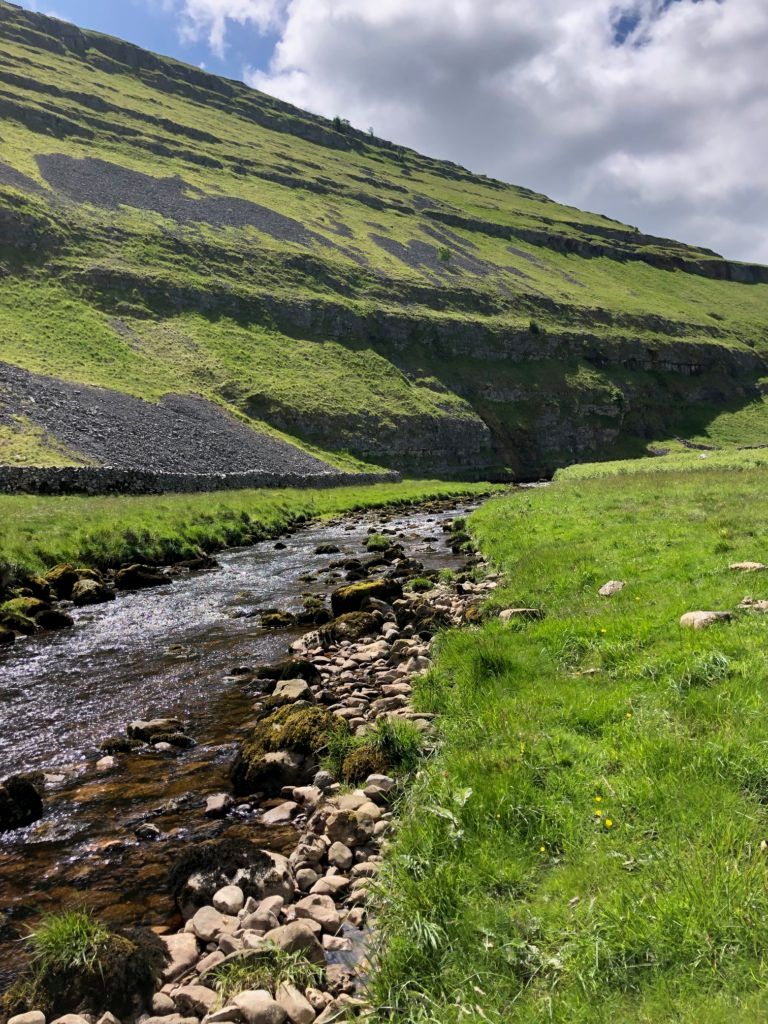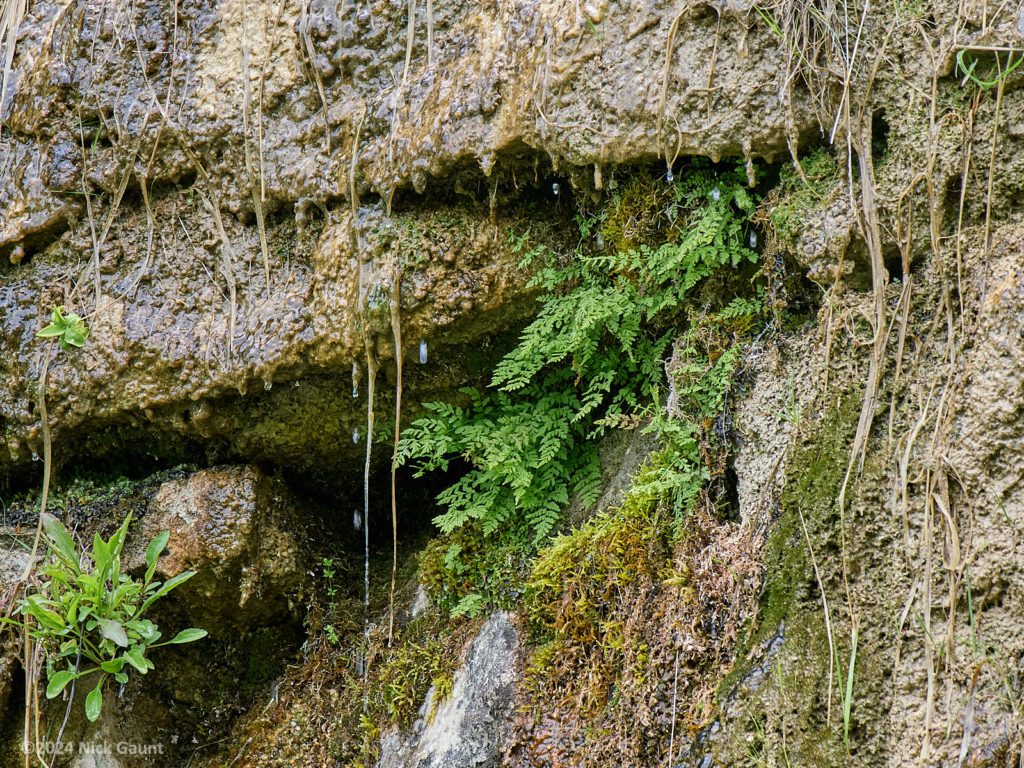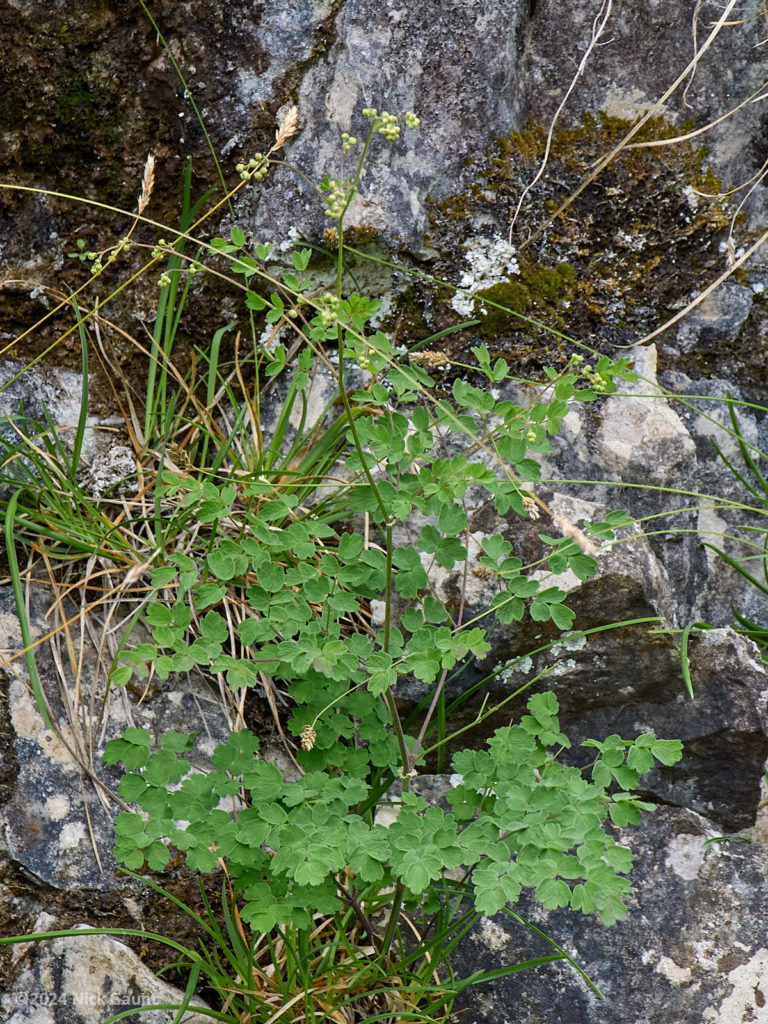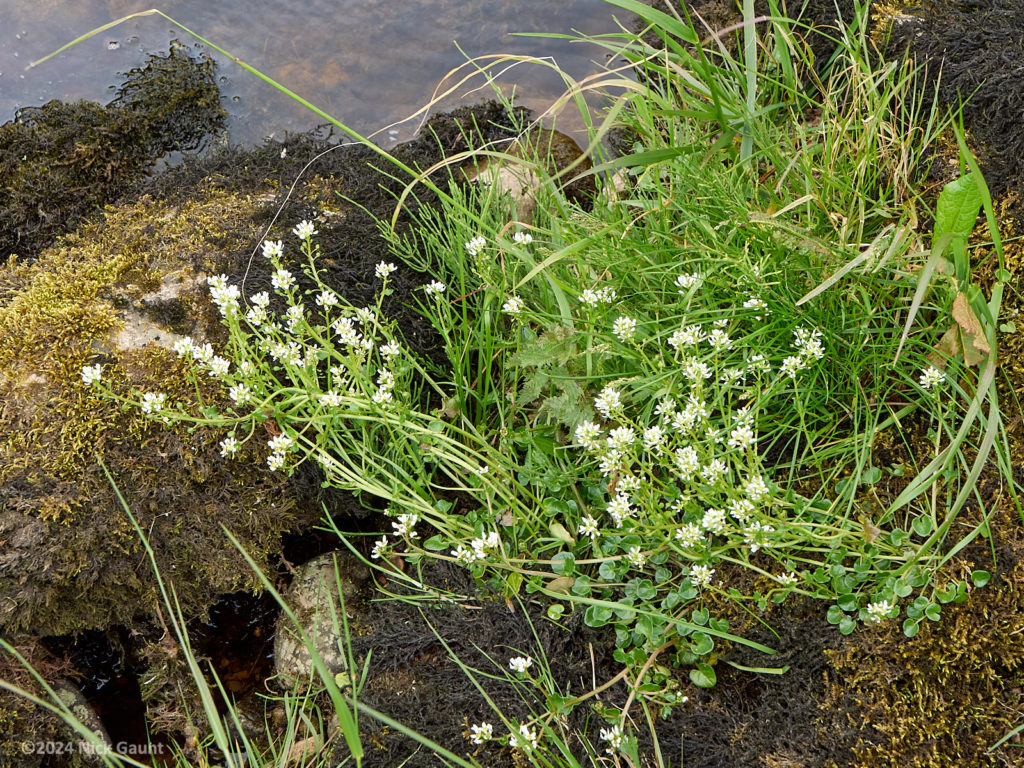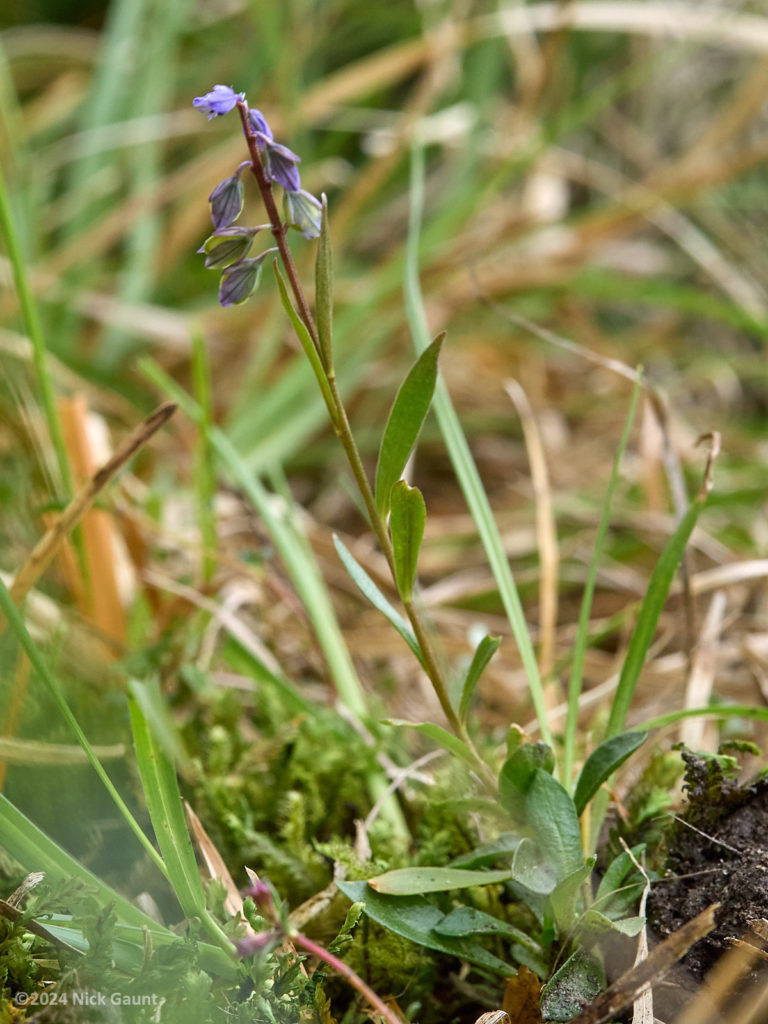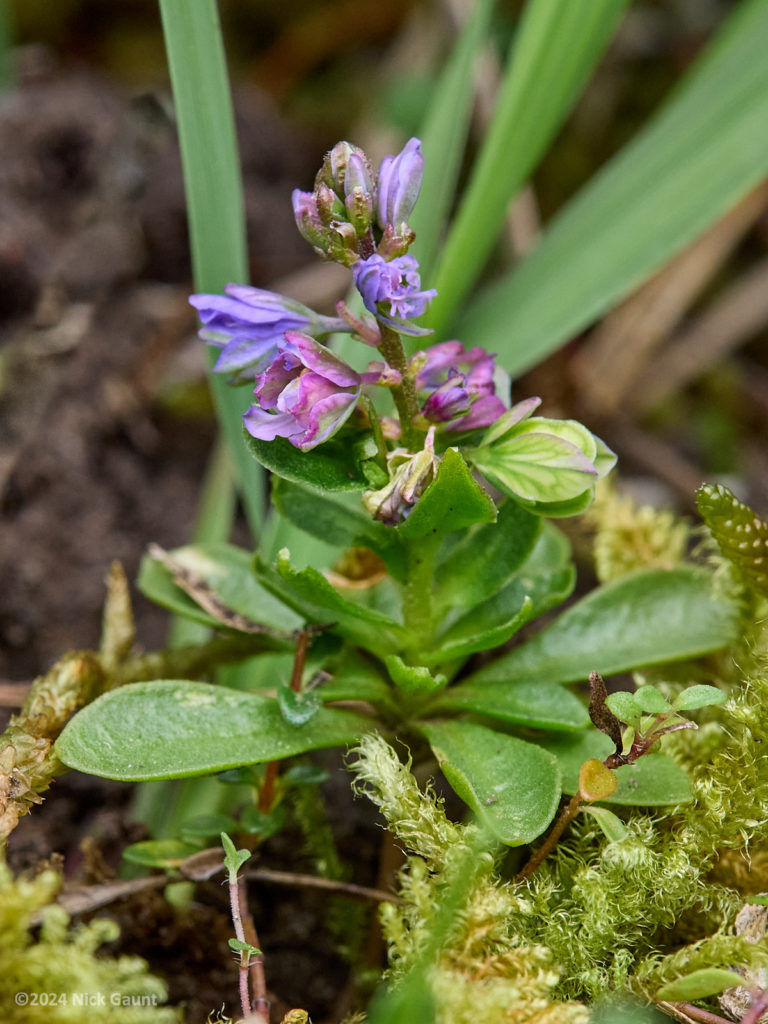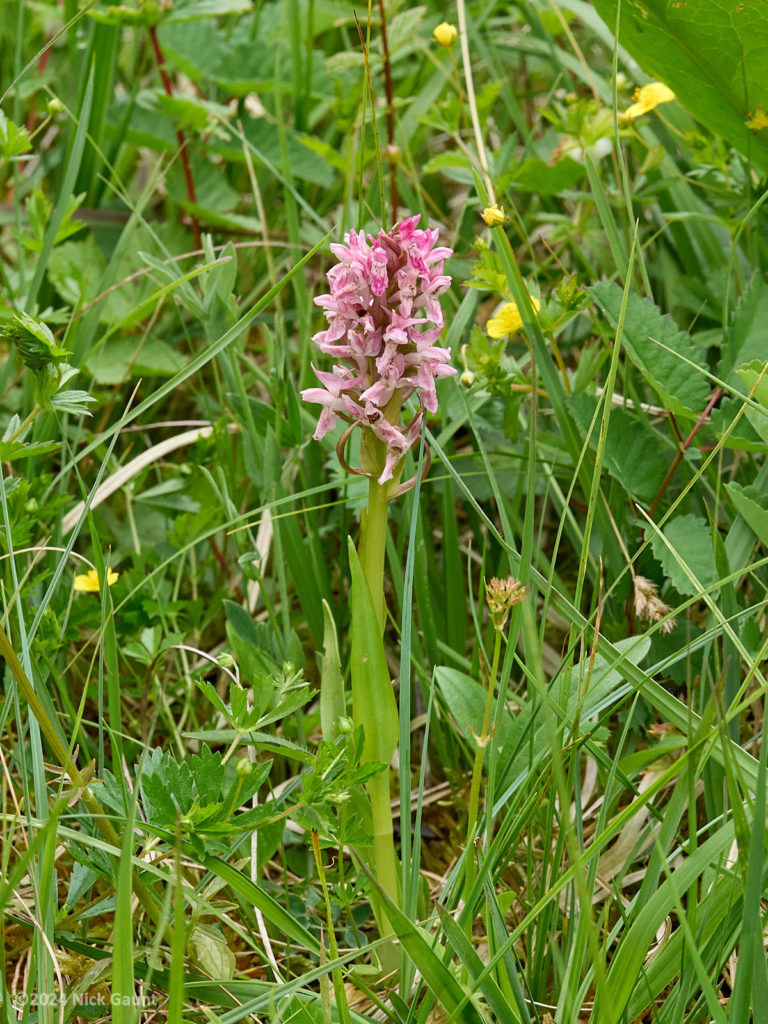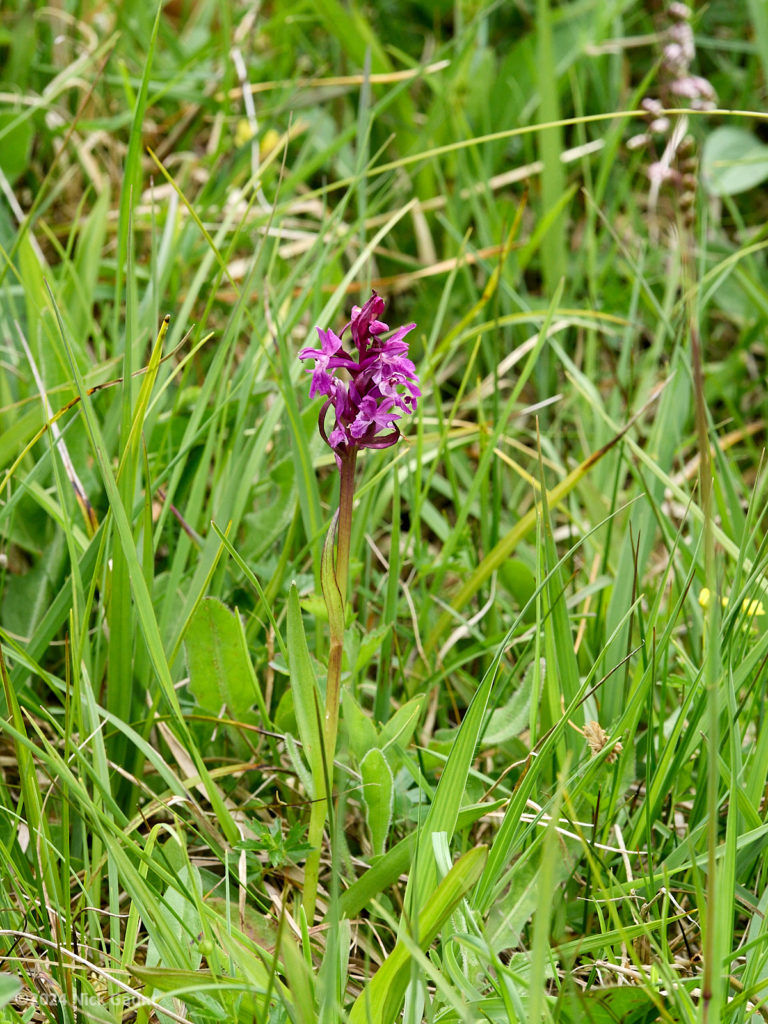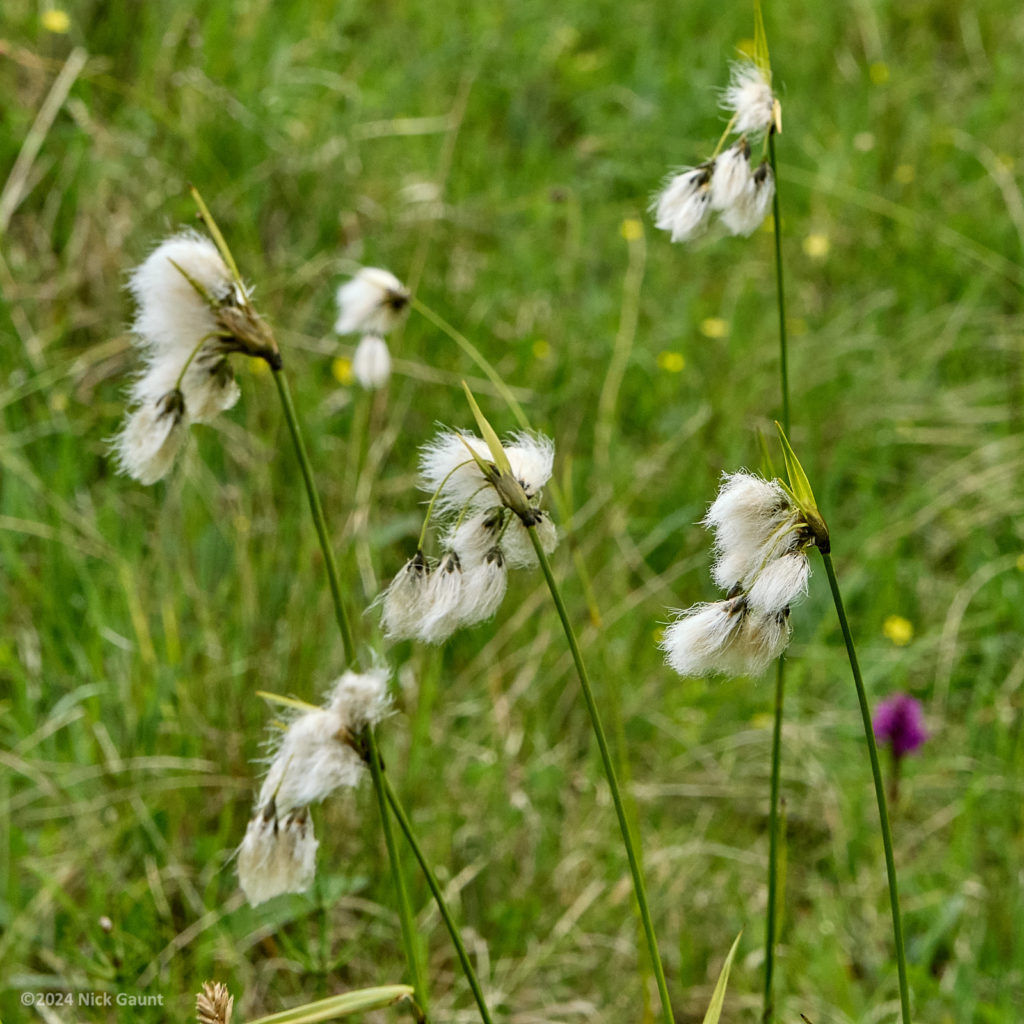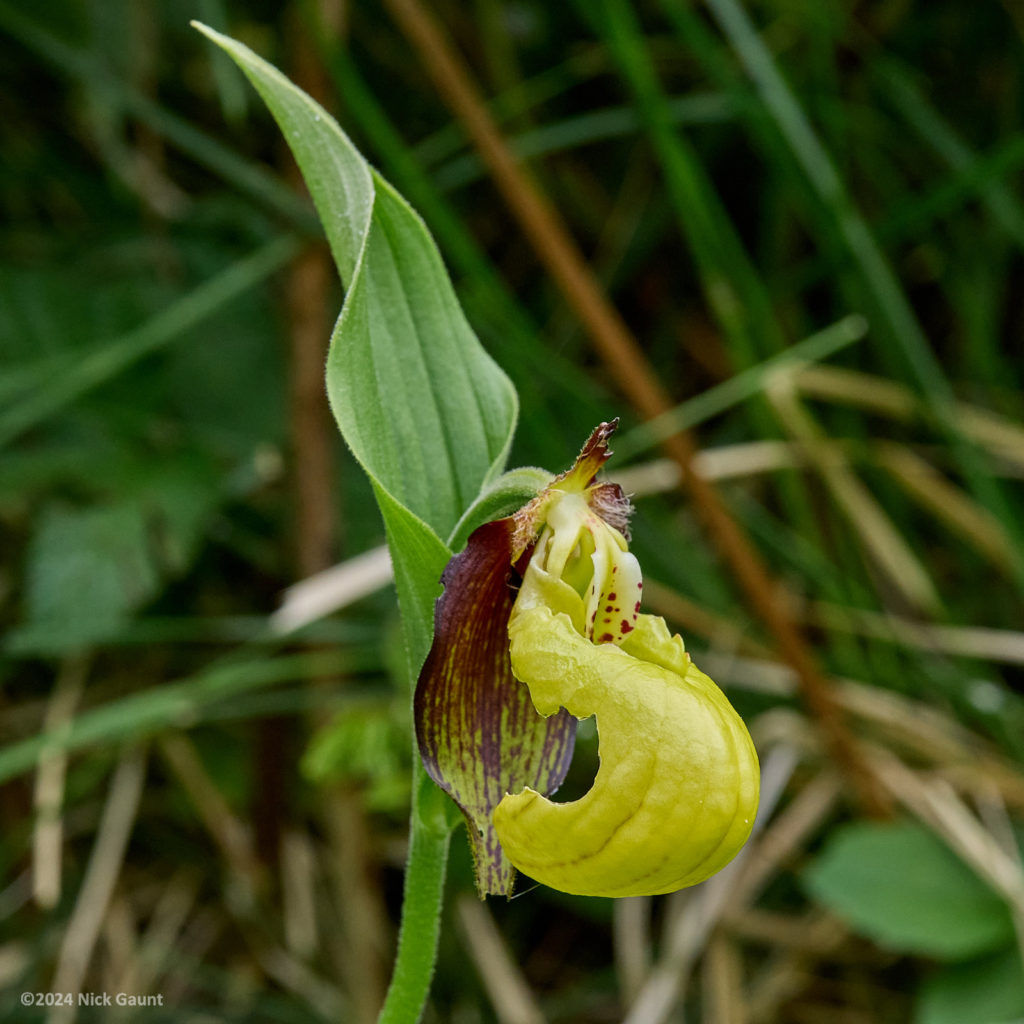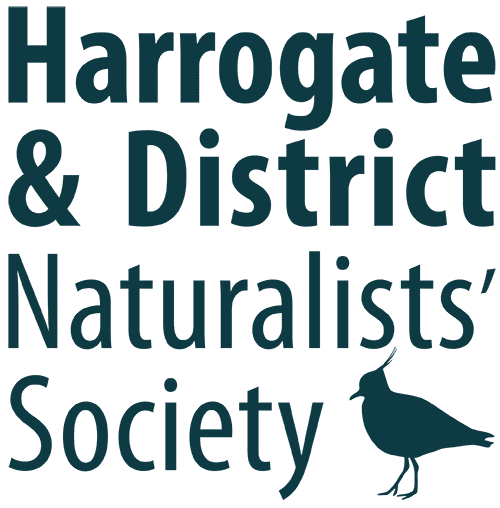After heroic car sharing choreography, 16 Naturalists met at the top of the hill just above Arncliffe, where we were nearly blown over when we emerged from the cars! It was 10°C, overcast and nearly raining – well, it was only two weeks until the summer Solstice…
Our site was Cowside Beck at the bottom of Yew Cogar Scar, which forms a dramatic steep-sided valley in the limestone. The main goal was Dryas octopetala, the Mountain Avens, a beautiful and extremely rare plant, a relic of the last ice age, here at the Southern limit of its distribution.
The steep descent of 100m begins directly from the parking spot. We had only gone a few metres before the wealth of flowering grasses had us all crouching on the ground while Kevin showed us useful ID features. Meadow Oat–grass with its silky silvery inflorescence and glaucous leaves, Crested Hair-grass, small and downy, Blue Moor-grass, no longer blue since it flowers in March; Sweet Vernal Grass smelling of new-mown hay, and the trembling flower heads of Quaking Grass. These and other small broadleaved plants scattered across the hillside are typical of these limestone uplands. Everyone was peering through hand lenses looking for forward- pointing prickles on the leaves of Bedstraws, poring over field guides in attempt to discriminate Milkwort species, and calling to Kevin for help…
Slowly, amongst grasses, sedges, wild thyme and rock rose, we gained the valley bottom – some of us wondering whether we would ever get back up! – and here enjoyed lunch in intermittent sunshine. At least the steep valley sides offered plenty of seating. Kevin pointed out another rare species, the Rock Whitebeam, visible on the rather inaccessible scar opposite us, and then spotted a clump of Pyrenean Scurvygrass growing in the beck – apparently good for scurvy, and Sheila gamely sampled it, but did not ask for seconds… Then we spread out to explore the banks for Mountain Avens. There were plenty of the plants, with their distinctive oak leaf like leaves, most had finished flowering and displayed their feathery clematis-like fruits, but Kevin finally located a slightly careworn white flower with a mass of yellow stamens – we all gazed at it reverently, little survivor of the ice age. They are actually quite abundant, and stable, in this one area, some in a fenced-off protected compound.
There was much more of interest here – Butterwort in flower, young Carline thistles, some orchids, Kidney Vetch, Bird’s-eye Primrose – see attached full list of the day’s species. A final foray in the valley bottom yielded the Dwarf Milkwort, this and the Dryas are probably the rarest plants most of us will ever see in the wild. Then the party struggled back up the hill at a variety of speeds and got back into nice warm cars!
The expedition finished with a trip to Kilnsey Park wildflower trail, which is a SSSI but part of a commercial park with fish farm and family activities; the Trail goes through a lovely rich calcareous flush with many orchids, some planted, including the fabulous Lady’s-slipper. Only one specimen was still in flower, and had to be rescued from a devouring slug by Kevin. Lots of other wetland plants can be seen from the Trail, rather haphazardly labelled, and we added 4 more species of sedge to the list.
This was an excellent day out, many thanks to Kevin for sharing his knowledge so generously – we all learned so much. And thanks to the drivers who enabled us to get 15 people from all over the district into 5 cars!
